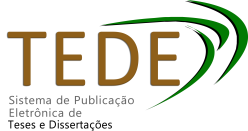| Compartilhamento |


|
Use este identificador para citar ou linkar para este item:
https://tedebc.ufma.br/jspui/handle/tede/5649Registro completo de metadados
| Campo DC | Valor | Idioma |
|---|---|---|
| dc.creator | VELOSO, Gabriela Lages | - |
| dc.creator.Lattes | http://lattes.cnpq.br/7439066742095145 | por |
| dc.contributor.advisor1 | OLIVEIRA, Rita de Cássia | - |
| dc.contributor.advisor1Lattes | http://lattes.cnpq.br/1362398045749836 | por |
| dc.contributor.referee1 | OLIVEIRA, Rita de Cássia | - |
| dc.contributor.referee1Lattes | http://lattes.cnpq.br/1362398045749836 | por |
| dc.contributor.referee2 | CAVALCANTE, José Dino Costa | - |
| dc.contributor.referee2Lattes | http://lattes.cnpq.br/0708860193607869 | por |
| dc.contributor.referee3 | PINHEIRO, Maria Iranilde Almeida Costa | - |
| dc.contributor.referee3Lattes | http://lattes.cnpq.br/9909757313049374 | por |
| dc.contributor.referee4 | QUEVEDO, Rafael Campos | - |
| dc.contributor.referee4Lattes | http://lattes.cnpq.br/5672071201353574 | por |
| dc.date.accessioned | 2024-11-27T17:54:14Z | - |
| dc.date.issued | 2024-09-20 | - |
| dc.identifier.citation | VELOSO, Gabriela Lages. Frente aos espelhos de Machado de Assis e José J. Veiga: entre símbolos e ressonâncias. 2024. 120 f. Dissertação (Programa de Pós-Graduação em Letras - Campus Bacanga) - Universidade Federal do Maranhão, São Luís, 2024. | por |
| dc.identifier.uri | https://tedebc.ufma.br/jspui/handle/tede/5649 | - |
| dc.description.resumo | O território especular possui fronteiras amplas. Diversas obras da Literatura mundial elegem o espelho, como mote de suas narrativas e versos. Essa tradição partiu dos clássicos e alcançou a Literatura contemporânea. O reflexo especular ganhou notoriedade a partir das narrativas míticas. Desde o mito de Narciso, – que se apaixonou pela própria imagem refletida na fina lâmina das águas de um rio – o espelho ganhou uma gama de significações possíveis. Por isso, podemos mapear, traçar uma cartografia, das diferentes representações simbólicas do espelho, ainda que de forma parcial, uma vez que cada símbolo tem significados infinitos. Nesse sentido, a presente pesquisa teve como principal objetivo realizar uma leitura comparada dos contos O Espelho (1882), de Machado de Assis, e Espelho (1997), de José J. Veiga, a fim de compreender a representação simbólica do espelho contida nesses textos. Para tanto, propomos um diálogo entre Literatura e Filosofia, tendo por sustentação a obra Aforismos para a sabedoria de vida (1851), do filósofo Schopenhauer, bem como os estudos de Todorov (2014), Carvalhal (2006), Chevalier & Gheerbrant (2001), além do recurso à fortuna crítica que já se formou em torno da temática do espelho e sua representação literária. Dessa forma, traçamos uma leitura comparada das narrativas de Machado e Veiga, analisando os aspectos da natureza humana “ser”, “ter” e “representar”, instituídos por Schopenhauer (1851), tal como se apresentam nesses contos. Essa pesquisa, portanto, visou expandir os horizontes de investigação de um tema, que se desdobra ao infinito, e, por isso, possibilita outras leituras e reflexões. | por |
| dc.description.abstract | The specular territory has wide frontiers. Several works of world Literature have elected the mirror as the theme of their narratives and verses. This tradition started in the classics and reached contemporary Literature. The specular reflection gained notoriety from mythical narratives. Since the myth of Narcissus – who fell in love with his own image reflected in the thin sheet of water in a river – the mirror has gained a range of possible meanings. Therefore, it is possible to map, to draw a cartography, of the different symbolic representations of the mirror, even if only partially, since each symbol has infinite meanings. In this sense, the main purpose of the present research was to carry out a comparative reading of the short stories O Espelho (1882), by Machado de Assis, and Espelho (1997), by José J. Veiga, in order to understand the symbolic representation of the mirror contained in these texts. To do so, we propose a dialog between Literature and Philosophy, based on the work Aphorisms on the Wisdom of Life (1851), by the philosopher Schopenhauer, as well as studies by Todorov (2014), Carvalhal (2006), Chevalier & Gheerbrant (2001), in addition to the critical fortune that has already been formed around the theme of the mirror and its literary representation. In this way, we drew up a comparative reading of Machado’s and Veiga’s narratives, analyzing the aspects of human nature “to be”, “to have” and “to represent”, instituted by Schopenhauer (1851), as they are presented in these short stories. This research, therefore, aimed to expand the horizons of investigation of a theme that unfolds infinitely, and consequently allows for other readings and reflections. | eng |
| dc.description.provenance | Submitted by Daniella Santos (daniella.santos@ufma.br) on 2024-11-27T17:54:14Z No. of bitstreams: 1 Gabriela_Lages_Veloso.pdf: 852640 bytes, checksum: 3b5b0f72d96c7941082ad71df0d54d96 (MD5) | eng |
| dc.description.provenance | Made available in DSpace on 2024-11-27T17:54:14Z (GMT). No. of bitstreams: 1 Gabriela_Lages_Veloso.pdf: 852640 bytes, checksum: 3b5b0f72d96c7941082ad71df0d54d96 (MD5) Previous issue date: 2024-09-20 | eng |
| dc.description.sponsorship | CAPES | por |
| dc.format | application/pdf | * |
| dc.language | por | por |
| dc.publisher | Universidade Federal do Maranhão | por |
| dc.publisher.department | DEPARTAMENTO DE LETRAS/CCH | por |
| dc.publisher.country | Brasil | por |
| dc.publisher.initials | UFMA | por |
| dc.publisher.program | PROGRAMA DE PÓS-GRADUAÇÃO EM LETRAS - Campus Bacanga | por |
| dc.rights | Acesso Aberto | por |
| dc.subject | literatura comparada; | por |
| dc.subject | Filosofia; | por |
| dc.subject | espelho; | por |
| dc.subject | representação simbólica; | por |
| dc.subject | comparative literature; | eng |
| dc.subject | Philosophy; | eng |
| dc.subject | mirror; | eng |
| dc.subject | symbolic representation. | eng |
| dc.subject.cnpq | Letras | por |
| dc.title | Frente aos espelhos de Machado de Assis e José J. Veiga: entre símbolos e ressonâncias | por |
| dc.title.alternative | In front of the mirrors of Machado de Assis and José J. Veiga: between symbols and resonances | eng |
| dc.type | Dissertação | por |
| Aparece nas coleções: | DISSERTAÇÃO DE MESTRADO - PROGRAMA DE PÓS-GRADUAÇÃO EM LETRAS - CAMPUS BACABAL | |
Arquivos associados a este item:
| Arquivo | Descrição | Tamanho | Formato | |
|---|---|---|---|---|
| Gabriela_Lages_Veloso.pdf | Dissertação de Mestrado | 832,66 kB | Adobe PDF | Baixar/Abrir Pré-Visualizar |
Os itens no repositório estão protegidos por copyright, com todos os direitos reservados, salvo quando é indicado o contrário.




